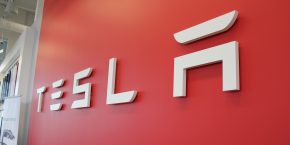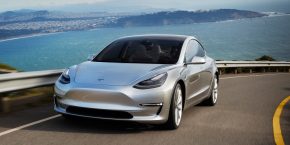
Tesla released a lot of information about the production version of the Model 3 last month at the launch event, but the automaker also insisted on leaving out specific information about the vehicle.
We now get our first look at some of those details through the Model 3’s EPA certification.
With Model S and Model X, Tesla has been associating the energy capacity of its battery packs to the naming scheme of its vehicles. For example, a Model S with a 75 kWh battery pack is called a Model S 75.
While Tesla enthusiasts are now familiar with the scheme and energy capacity in general, the Model 3 aims to be accessible to the mass market and therefore, the company is trying to dissociate potentially confusing energy capacity terms and focus on the actual range instead.
It’s why the Model 3 is either simply offered with a standard battery pack, which is going into production later this year, or a “long range” battery pack, which is currently in production and enables 310 miles of range.
Nonetheless, for those interested in the actual energy capacity of the pack, Tesla disclosed in documents for its EPA certification (embedded below), that the long range Model 3 battery pack has a total voltage of 350 volts and a capacity of 230Ah, which results in 80,500 Wh or 80.5 kWh.

That would be the total capacity and not the usable capacity of the pack and therefore, it can’t really be compared to the advertised capacity in the Model S and Model X. A manufacturer comment attached also says that the capacity is 78 kWh.
Update: Tesla says that those numbers were for the EPA’s tests and our calculations doesn’t represent pack capacity.
Tesla’s hacked Battery Management System gave us some insights into the real usable capacity of its battery packs last year for some context.
Either way, it’s actually greater than originally expected since CEO Elon Musk said that the Model 3’s wheelbase allows for a battery pack up to 75 kWh.
Other interesting information from the filing includes the confirmation that Model 3 is using a 3 phase permanent magnet electric motors, which is a departure from Model S and Model X’s induction motor.
The AC induction motor was invented by Nikola Tesla and it was a big part of the heritage of the namesake company. Most electric vehicles today, cars or otherwise, use permanent magnet motors – so it’s a natural shift that a car aimed at the mass market would also use the proven technology.
We also learn that the Model 3’s rear-wheel-drive motor is rated at 258 horsepower, according to the document. As expected, it’s less powerful than the standard Model S/X RWD motor, but a more powerful version is expected to be released for the performance version of the car, as well as a dual motor version next year.
Update: Tesla says the power output was for the EPA’s test and doesn’t represent their power rating.
Another interesting tidbit of information from the same document is that Tesla is listing regenerative braking from both axles instead of just the rear, like it does on RWD Model S vehicles.
During my short test drive of the long range RWD Model 3, I found that the regenerative braking was a lot smoother than what I am used to in my Model S P85, which is also rear-wheel-drive.
Furthermore, they released some dyno tests for city and highway driving:
Those are tests performed on a dynamometer and not the final EPA ratings based on their driving cycles, but they are promising.
The Model 3 will easily be one of the most efficient production cars ever made based on those test.
Here’s the document in full:
[scribd id=355735338 key=key-iofB7H48sZFHvdyt5q0N mode=scroll]
FTC: We use income earning auto affiliate links. More.





Comments